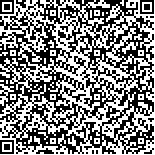| 摘要: |
| 采用ISSR标记技术对来自不同产地的6个坛紫菜(Porphyra haitanensis)无性系和两个条斑紫菜(P.yezoensis)无性系进行了遗传差异的分析。结果表明,7条ISSR引物在8个紫菜系中共扩增出59条片段,全部表现出多态性。根据Nei等的相似性系数得出8个紫菜系间的遗传距离在0.274-0.746之间。用UPGMA方法作出的系统树中各紫菜基本上是按照产地进行聚类,从而推测紫菜的遗传差异可能与地域分布相关。本文结果也证明了ISSR与RAPD、AFLP等标记技术一样适用于紫菜的遗传多样性分析。 |
| 关键词: 坛紫菜 条斑紫菜 ISSR 遗传距离 |
| DOI: |
| 分类号: |
| 基金项目:浙江省自然科学基金项目,M403015号、Y304094号 |
|
| ISSR ANALYSIS ON GENETIC VARIATION IN PORPHYRA |
|
SUN Xue, LUO Qi-Jun, YANG Rui, PEI Lu-Qing
|
|
Marine Biotechnology Laboratory,Ningbo University,Ningbo,315211
|
| Abstract: |
| ISSR (inter-simple sequence repeat) molecular marker technique, derived from SSR (simple sequence repeat or microsatellite), has been applied in various fields such as germplasm identification, evolution, and phylogenetic relationship and genetic diversity in higher plants. However, investigations with regard to algae were quite insufficient. In this paper, the genetic variation of marine red alga Porphyra was analyzed using ISSR.
Six lines of P. haitanensis and 2 lines of P. yezoensis were sampled, of which P. haitanensis included 3 cultivated lines (Hza, Hzc and Hzf) collected from Fujian Province, one wild line (Hpt) and 2 cultivated lines (Hmy and Hzz) from Zhejiang Province. And 2 lines of P. yezoensis from Jiangsu Province were named as Yn5l and Yn55. Among the screened 15 ISSR primers, 7 could generate clear bands. Total 59 fragments were generated with the 7 primers in the 8 lines of Porphyra, and all appeared to be polymorphic. From the amplification patterns, 2 lines of P. yezoensis could be distinguished from 6 lines of P haitanensis in primer P16 or P47; 3 lines of P. haitanensis from Zhejiang Province were different from others in primer P16; and 2 cultivated P. haitanensis (Hmy and Hzz) were distinct from wild P. haitanensis (Hpt) in primer P60 or P02. The genetic distances of the 8 lines of Porphyra ranged from 0.274 to 0.746 based on Nei’s similarity coefficient. The smallest genetic distance was between Yn5l and Yn55 (0.274), followed by the one between Yn55 and Hpt (0.294). The longest distance came between Hzf and Hpt (0.746); Hzf and Hmy, Hzf and Hzz, came to the next whose genetic distances were both 0.690.
In the dendrogram built by UPGMA method, the first 3 clustering groups could be recognized clearly. Group I was consisted of Hza and Hzf, Group II contained Hpt, Hmy and Hzz, and Group III covered Yn5l and Yn55. Then, Group II joined together with Group III. At last, the formed big group joined with Group I and another P. haitanensis from Fujian. P. haitanensis from Zhejiang stayed more closer to P. yezoensis from Jiangsu. Moreover, the 8 lines of Porphyra were clustered together mainly according to production area, instead of species classification.
From the above results, it was concluded that the genetic variation of Porphyra was relevant to their living localities, which was consistent with previous reports found in Porphyra by applying RAPD or AFLP technique. The study also showed that ISSR technique is a good tool to analyze the genetic diversity of Porphyra, just as other molecular markers do. |
| Key words: Porphyra haitanensis, P. yezoensis, ISSR, Genetic distance |
